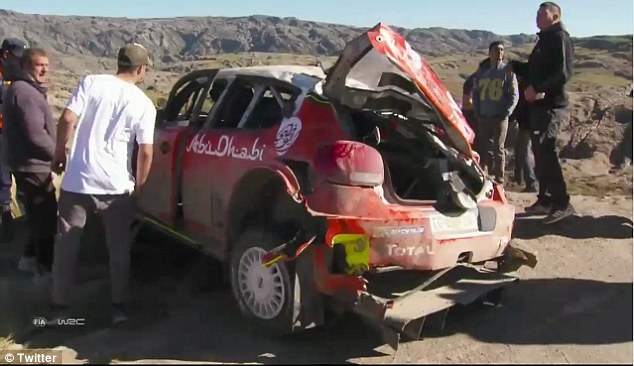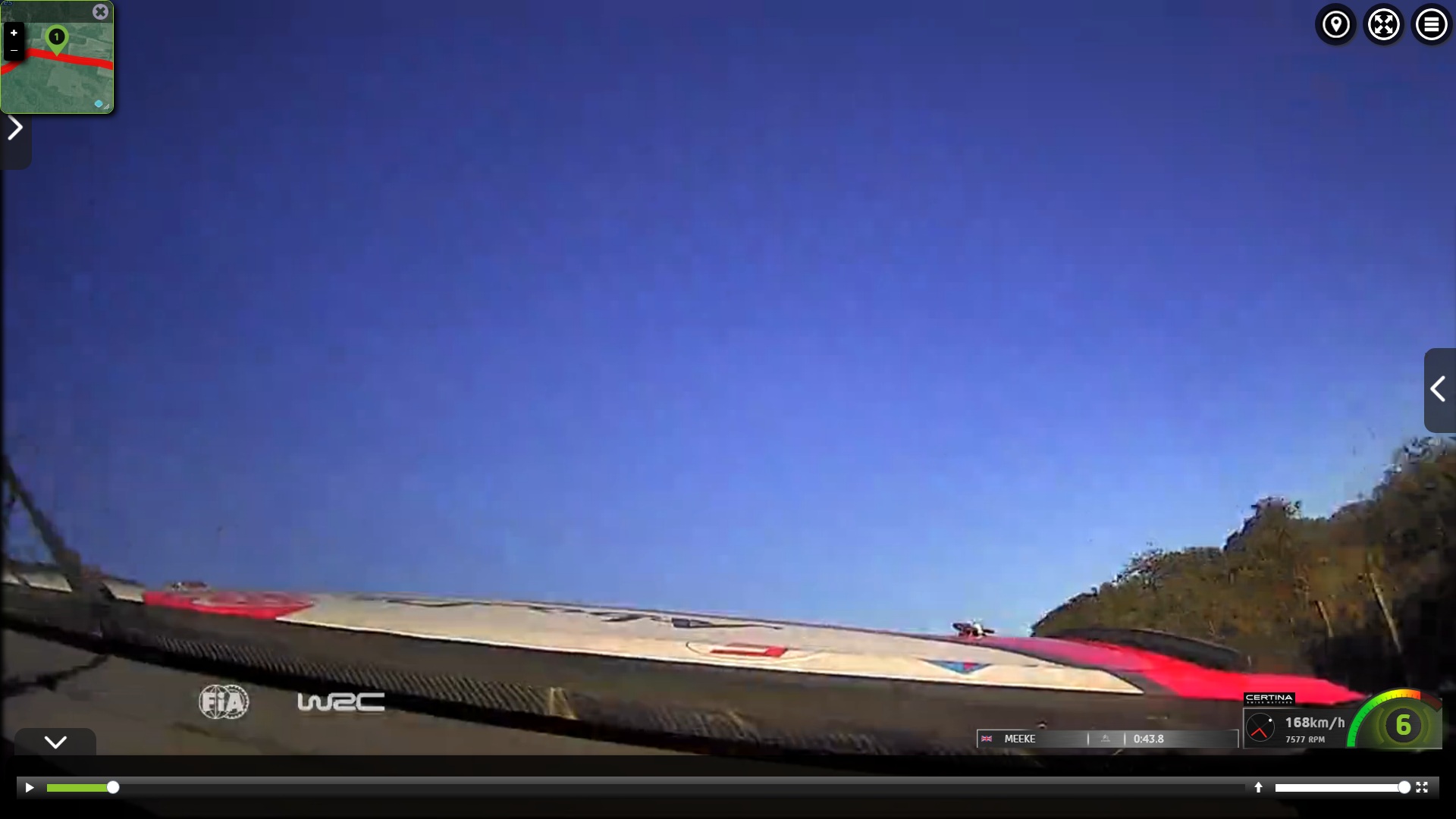There’s Something Very Wrong With Citroen’s Dampers

I’ve been suspecting this for some time now, but after witnessing the events that unfolded in Argentina this weekend, I think it’s safe to put this out there. There is something very wrong with the dampers on the Citroen C3 WRC. Before we dive into this topic, let’s go over a quick review on what dampers are and how they work. Dampers (or shock absorbers as they’re known in America) are hydraulic devices used to control the oscillations of the spring. An easier way to say this is that they keep the spring from “bouncing” continuously like a pogo stick long after the car has gone over a bump. Although dampers are very important in circuit racing cars, they are essential in rally cars due to the uneven surface of a rally stage. Improvements in damper technology are one of the primary reasons that average speeds have increased in the WRC over the years. Bumps and jumps that would require a bit of lifting and maybe even a touch of the brake to settle the car 20 years ago can now be navigated flat out. This is because the dampers are “ironing” out those bumps and keeping the tires in contact with the road as much as possible. The more time that the tires spend in contact with the road, the more lateral grip and forward momentum is made available to the driver. This increased grip and forward drive translates to faster average speeds. There are two phases of damper mechanics, bump and rebound, and we’re going to take a look at Citroen’s most recent adventures to illustrate how they should, but in Citroen’s case, aren’t working properly.
Bump:
The bump setting on a damper controls how quickly the spring reacts when pressure is applied to it. There are two phases of this, bump, and fast bump. The regular bump setting controls the spring on more gradual transitions. An example of this is when the nose of the car settles down under braking. The fast bump setting controls the spring when it is subjected to a sudden shock such as a compression or a jump. This is where I believe most of Citroen’s problems lie. The clues can be found both in the footage of the cars, but also in what the drivers are saying. Let’s start with Craig Breen. On SS2, the first proper stage of the rally, he mentioned a huge bump in the first kilometer of he stage that shattered his confidence. Unfortunately, WRC+ doesn’t have Breen’s onboard footage from that stage, but it does have Kris Meeke’s and he experiences the same problem. If you own a subscription to WRC+ (and you should) check out what happens to Kris. At 43 seconds into the stage, he goes over the same bump and it shoots the nose of his C3 skyward. You can see in the still capture below what I mean. Fortunately, this time, he was lucky and the car was pointed straight down the road.

Photo Credit WRC+
However, on SS4, Kris had the same problem, but this time he wasn’t so lucky. As you can see in the video, he again hits a bump in the road and it again throws the front of his car up into the air. Unfortunately for Kris, it was on the outside of a fast left hand corner, so the car got thrown off into the trees. It happened so quickly that Kris had no time to recover and before he knew it, he was tumbling onto his roof. Craig Breen had a problem with the very same bump. He didn’t go off the stage, but the shock was enough to damage his gearbox and end his rally. In both cases, the fast bump settings on the C3’s dampers were not doing their job. For Kris, it looks like there was an issue specifically with the front dampers. Either they were set too stiff which didn’t allow them to absorb the bump properly, or they were far to soft causing the spring to compress fully until it hit the stops and bounced the front of the car into the air.
If I ended the piece here, you’d think that Citroen’s problems were bad enough, but sadly, there’s even more to this issue. After the team put Meeke’s C3 back together, he had a massive crash on SS14. Once again, it was caused by a nasty bump in the road. However, did you notice what happened this time? Unlike the incidents on Friday, the rear of the car kicked up into the air and pointed the nose into the ground. Even though the symptom was different, the end result was the same, and once again, Kris was catapulted off the road without a chance to recover. If I had a guess, I’d say that after Kris and Craig had their issues on Friday, the team made a change to the dampers to prevent the front of the car from taking off over a bump. Perhaps they overcompensated and as a result of the change, the rear end got kicked up into the air instead.
Let’s look at one more video; this one is the famous car park excursion that Kris Meeke survived in Mexico back in March. Just like the incidents in Argentina, a sudden compression threw the Citroen C3 off the road. However, when you look at the TV footage from the side of the stage, you will see that the entire car gets bounced up into the air. As the car is flying towards the bushes on the side of the road, it is perfectly level with neither the front nor the rear trying to take off. In this case, unlike in Argentina, it looks like the dampers were set evenly between the front and the back, but as a whole, they were still unable to compensate for the huge bump in the road.
Rebound:
Now that we’ve covered the bump settings, let’s take a moment to talk about the rebound aspect of the dampers. Just like it sounds, the rebound settings control how quickly or slowly the springs expand then the load is suddenly taken away. An example of when rebound comes into play is when a rally car gets light over a crest. If the rebound is correctly set, the suspension will extend and keep the wheels in contact with the road. Once again, as well as with the bump settings, the Citroen C3 seems to be having difficulty. Let’s cast our minds back to Rally Sweden where Kris Meeke had a few very embarrassing offs. They didn’t result in much damage, but did ruin his rally with the time he lost off the road. If you check out the 30 second mark of the video below, you will see one example where the car gets very light over a crest and Kris appears to have no contact with the road to get the car turned into the following corner. In this case, the rebound was most likely far to slow and did not allow the suspension to travel downward as the car lifted to keep the tires in contact with the road.
So why are we seeing these problems again and again with Citroen? They’ve been in the WRC for a long time with several different iterations of the rules. One would think that with their experience, damper setup shouldn’t be a problem. I believe that the answer lies with the increased down-force that the 2017 cars produce. With the big splitter on the front and the huge wing on the back, the constant force being exerted upon the dampers is far more than ever before. At high speeds, the increased down-force is keeping the suspension in a compressed state. When a compression does appear in the road, the dampers are already under so much load that they are unable to compensate for the bump and the car reacts in a very strange and unpredictable way. Even though Citroen has had the most dramatic issues, there are other teams struggling with this issue as well. Do you remember in Sweden when Jari-Matti Latvala went over a similar bump on Friday? Like Meeke’s C3 in Argentina, the front of Latvala’s Toyota was thrown up into the air for several seconds. In an instant, he lost all confidence for the rest of the stage. With the increased speed that these cars are hitting bumps in the road and extra down-force pushing the suspension into a continually compressed state, the 2017 cars, especially the Citroen C3, are a “Jack in the Box” waiting to explode. Let’s see if they can get this sorted before the end of the season.



